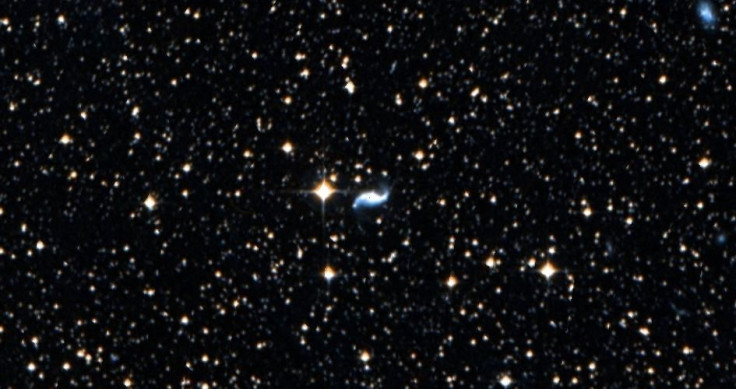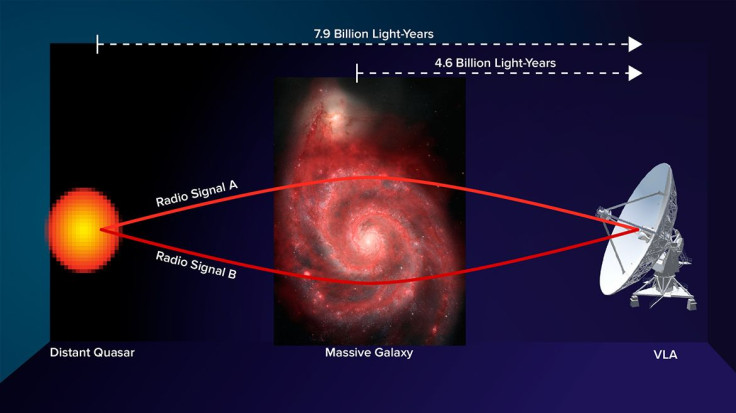Galaxy 5 Billion Light-Years Away Helps Study Origin Of Magnetic Fields

A gargantuan cosmic lens, a team of astronomers and a galaxy far-far away have come together to crack the origin of magnetic fields in the universe and how it evolved to its present state.
The galaxy, a record 5 billion light-years away from earth, has pointed to a solution about the problem that has been at the forefront of all cosmic questions: the formation of such fields after the big-bang and its influence in the early development of galaxies as we know them.

The discovery came when scientists used the National Science Foundation's Karl G. Jansky Very Large Array (VLA) to study a star-forming galaxy that lies directly between a more-distant quasar and Earth.
Radio waves bounced off the quasar returned as two distinct images of the quasar after passing through the galaxy in the middle.
The significance of this discovery stems from two things.
The split waves from the quasar passed through different parts of the galaxy and were aligned and polarized differently. It aligned itself to magnetic field lines of the distant galaxy, which was found to be very similar to our own galaxy. The alignment and polarization were affected differently pointing to a coherent pattern in the field.
Also, the alignment of the magnetic field in the galaxy is essentially 5 billion years old.
This means that we get to study the magnetic field lines of a galaxy from 5 billion years ago, providing insight into the field lines and their evolution over time. Comparing modern day field lines with those from 5 billion years ago could help us map out the development of magnetic fields, and also help us predict future changes in the phenomena.
"The results of our study support the idea that galaxy magnetic fields are generated by a rotating dynamo effect, similar to the process that produces the Sun's magnetic field," Sui Ann Mao, Minerva Research Group Leader for the Max Planck Institute for Radio Astronomy in Bonn, Germany said. "However, there are other processes that might be producing the magnetic fields. To determine which process is at work, we need to go still farther back in time — to more distant galaxies —and make similar measurements of their magnetic fields," she added in a news release by National Radio Astronomy Observatory.
This dynamo effect means that celestial bodies can sustain magnetic fields through astronomical time scales because of the movement of the hot fluids in the core which can conduct electricity.
"This measurement provided the most stringent tests to date of how dynamos operate in galaxies," said Ellen Zweibel from the University of Wisconsin-Madison in the news release.
So, with more exploration, we could find older images of galaxies and their magnetic field to help plot the graph leading to a definitive answer about how this energy morphed over time.
This is important because the magnetic fields play a pivotal role in the physics of the tenuous gas that permeates the space between stars in a galaxy. Understanding how those fields originate and develop over time can provide astronomers with important clues about the evolution of the galaxies themselves.
If the factors around early cosmic entities are better understood, their development and progress through time can be better understood. This marks an important step towards understanding our past and the factors that led to the birth of our galaxy.
© Copyright IBTimes 2024. All rights reserved.





















